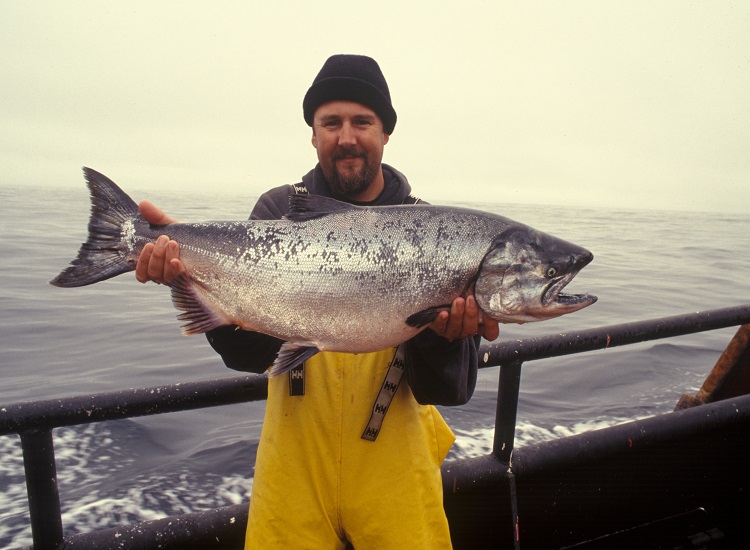Are you looking for a new adventure to add to your list of hobbies? Have you ever considered trying sea fishing? It’s an exciting and rewarding activity that can be enjoyed by beginners and experienced anglers alike. But where do you start? In this ultimate beginner’s guide, we’ll cover everything you need to know about talk sea fishing – from the different types of sea fishing to the best time to go, what equipment you need, the fish species available in the ocean, and how to prepare your catch. Let’s dive in!
What is sea fishing?
Sea fishing is a type of angling that involves catching fish in the ocean, either from shore or by boat. It’s an enjoyable and challenging activity that requires patience, skill, and knowledge.
One of the reasons sea fishing is so popular is because it gives anglers the opportunity to catch a wide variety of fish species that are not found in freshwater bodies. From tuna to marlin, sea bass to cod – there’s no shortage of targets for anglers looking for a challenge!
Sea fishing can be done using different techniques such as bottom fishing or trolling. Bottom fishing involves dropping your baited line down to the seabed while trolling utilizes lures which are dragged behind a moving boat.
Whether you’re after big game trophy fish or simply want to enjoy some relaxing time on the water with friends and family, sea fishing offers something for everyone. So grab your gear and get ready for an adventure!
The different types of sea fishing
Sea fishing is a popular sport enjoyed by many around the world. There are various types of sea fishing, each with its own unique experience and challenges.
One type of sea fishing is shore or beach fishing, which involves casting your line from the shoreline. This can be done during both high and low tide and typically targets fish like bass, cod, pollock and mackerel.
Another type of sea fishing is boat fishing where you’ll need to hire a charter boat for deep-sea adventures. Boat fishing allows you to reach deeper waters where there’s a higher chance of catching bigger fish species such as tuna, marlin, swordfish and sharks.
Fly-fishing in the ocean presents another challenge altogether; it involves using artificial flies on light tackle while targeting predatory fish species like kingfish or tarpon that feed just below the surface.
Kayak or canoe-based sea angling has been gaining in popularity over recent years too. It’s an eco-friendly way to explore coastal waters quietly while offering access to areas inaccessible by larger boats.
No matter which method you choose for your next adventure out at sea – make sure you have researched well beforehand so that you’re fully prepared for any situation that may arise!
The best time to go sea fishing
The best time to go sea fishing depends on various factors such as the type of fish you want to catch, weather patterns, and tidal movements. Generally, early mornings and late afternoons are considered the best times for sea fishing.
During these times, fish tend to come closer to shore in search of food or when the tide is in their favor. However, some species of fish are more active during certain seasons such as winter or summer months.
It’s important to keep an eye on weather forecasts before planning a sea fishing trip. Strong winds and heavy rain can make it difficult and unsafe for fishermen to navigate through rough waters. Additionally, pay attention to water temperatures as they can affect where fish are located.
If you’re unsure about the best time for sea fishing in your area, consider hiring a local guide who has extensive knowledge about local conditions. They can also advise you on what equipment might be needed based on seasonal changes.
Being aware of environmental factors that could impact your catch will help increase your chances of having a successful day out at sea!
What equipment do you need for sea fishing?
When it comes to sea fishing, having the right equipment is crucial for a successful and enjoyable experience. Here are some of the essential items you’ll need before heading out on your next sea fishing adventure.
Firstly, you’ll need a good quality rod and reel that can handle the weight of the fish you’re targeting. There are a variety of options available depending on your skill level and budget.
You should also invest in sturdy fishing line that won’t break easily, as well as hooks, swivels and sinkers to help bait stay in place. A tackle box will keep all these smaller items organized and easy to access while out at sea.
A life jacket or personal flotation device is essential safety gear for any boating or fishing trip. It’s important to choose one that fits properly and is designed for use in water sports.
Other useful items include polarized sunglasses to reduce glare off the water, sunscreen to protect against sunburns, and a waterproof bag or container to keep valuables safe from water damage.
By ensuring you have all the necessary equipment before setting off on your sea fishing journey, you’ll be able to focus on enjoying yourself and reeling in those big catches!
The different types of fish you can catch
When it comes to sea fishing, the variety of fish you can catch is vast and exciting. From small species like mackerel to larger game fish like tuna, there’s something for every angler.
One type of fish that is popular among sea anglers is bass. They are known for their fierce fight and elusive nature, making them a challenging catch. Another sought-after species is cod, which tends to be found in deeper waters and can grow up to 6 feet long!
If you prefer smaller catches, then mackerel may be the way to go. These speedy little fish are easy enough for beginners to catch but still offer an exciting challenge due to their agility.
For those looking for a trophy catch, shark fishing might be of interest. Sharks can range from small dogfish varieties all the way up to massive great whites or hammerheads! However, it’s important always respect these creatures by practicing safe handling techniques.
In conclusion (just kidding), with so many different types of fish available in saltwater environments around the world, there’s never a dull moment when it comes to talk sea fishing!
How to prepare your catch
Once you’ve caught your fish, it’s time to prepare it for cooking or storage. Here are some tips on how to clean and store your catch.
First, make sure you have a sharp fillet knife. A dull knife can actually be dangerous when cleaning a fish as it can slip and cause injury.
Next, rinse the fish in cold water to remove any dirt or debris from the scales. Then place the fish on a flat surface and begin by slicing behind the gills down towards the backbone.
Turn the fish over and repeat this process on the other side, removing both fillets along with any remaining bones.
If you plan on cooking your catch right away, season with salt, pepper and lemon juice for added flavor before grilling or frying.
If you’re not planning on eating your catch immediately, wrap each fillet tightly in plastic wrap or aluminum foil before storing in a freezer-safe bag. Label each bag with date of storage so that you know which one is oldest when retrieving from storage.
By following these simple steps, you’ll ensure that your sea fishing experience ends with delicious results!
Conclusion
Sea fishing is an exhilarating and rewarding activity for both beginners and experienced anglers alike. Whether you’re looking to catch your dinner or simply enjoy the thrill of reeling in a big one, there’s something special about being out on the water with a rod in hand.
By understanding the different types of sea fishing, best times to go fishing, essential equipment needed, various fish species that can be caught and how to prepare your catch properly, you’ll be well-equipped to start enjoying this exciting hobby.
So grab your gear and head out onto the open waters – who knows what kind of adventure awaits? Happy fishing!





